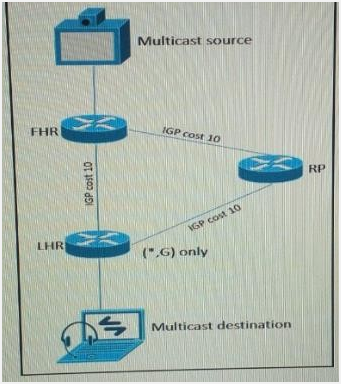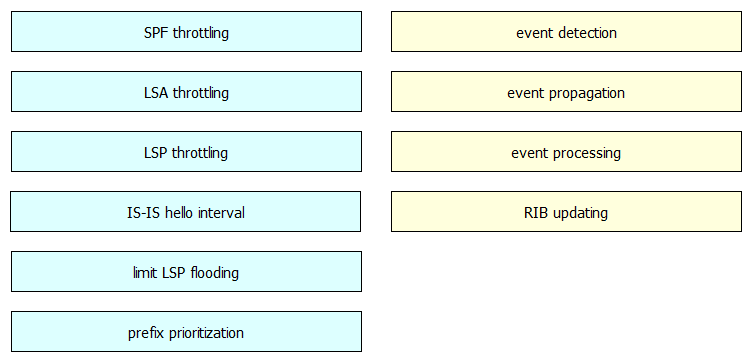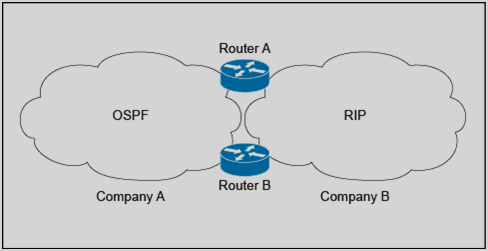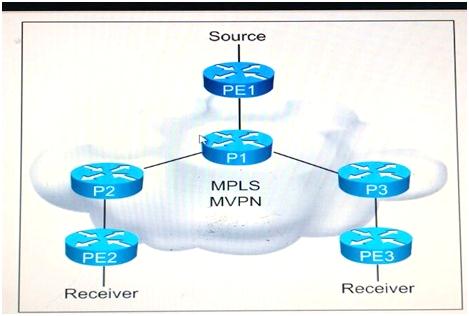Cisco 352-011 - Cisco Certified Design Expert Practical Exam
What is the definition of TOGAF framework?
Refer to the exhibit.
 As part of a redesign project, you must predict multicast behavior. What is the resultant multicast traffic receiving on the shared tree( , G), if it is received on the LHR interface indicated?
As part of a redesign project, you must predict multicast behavior. What is the resultant multicast traffic receiving on the shared tree( , G), if it is received on the LHR interface indicated?
A service provider wants to use a controller to automate the provisioning of service function chaining. Which two overlay technologies can be used with EVPN MP-BGP to create the service chains in the data center?
As a network designer for a major multiservice network, your first assignment is to improve the IS-IS convergence to meet application requirements. Drag and drop the convergence tools or techniques to be used on your proposal from the left into the corresponding convergence phase on the right.

Which solution suppresses the effect of excessive interface flapping events on routing protocols?
A DMVPN network is being deployed for 10 branch sites to connect to the central headquarters over the Internet. Each branch site connects to the internet via a 1.5 Mb/s ADSL line, and the headquarters connects to the Internet over a 100Mb/s circuit limited to 20 Mb/s by the service provider. Which QoS mechanism if any, do you recommend at the headquarters location?
You are redesigning a single-level IS-IS network with 500 routers, which have short-haul and long-haul links Most of the time the routing domain is stable, but periodically interfaces on long-haul links bounce for a short period of time , causing 10 to 20 flaps in a few minutes. The probable cause is local road construction. Although fast convergence important, the client has concerns about taxing CPU cycles on the older routing platforms. What change should you recommend that both protects the CPU of the older routers during the short periods of excessive flapping, yet does not have an impact on fast convergence for all interface failures?
Refer to the exhibit.

Company A is running a single-area OSPF, and Company B is running RIP as the IGP with no overlapping IP address spaces. Company A has just acquired Company B and both networks must be merged. Which three design components are recommended to guarantee connectivity and redundancy between the two networks? (Choose three.)
A healthcare customer requested that health statistics from their infrastructure devices are to be sent over their service provider MPLS network. Which protocol must be enabled?
Refer to the exhibit.

You are a network designer who is given these design requirements:
ï‚· Multicast services must be provided for Layer 3 VPN customers
ï‚· The same forwarding technology must be used as Layer 3 VPN unicast packets
ï‚· Replication of multicast traffic is not allowed on the ingress PE
Which multicast VPN technology conforms to the design requirements?




